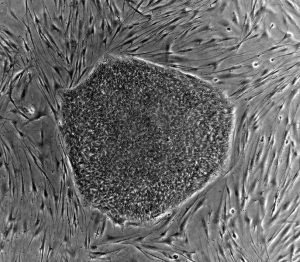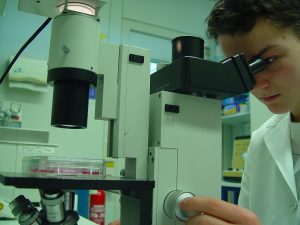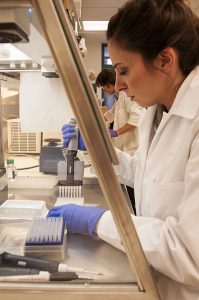What do you think about when you read the word stem cell?
Maybe you think back to blastocysts and bone marrow. Maybe you think about that new skin care product you saw in the store.

Embryonic stem cells derived from embryos are an important field of research. Source: Wikepedia Commons
Whatever your association may be, there is no denying that you are starting to see the word stem cell used a lot more frequently.
For myself, when I hear the word stem cell I think back to my co-op term performing research at STEMCELL Technologies. While Canadian biotechnology companies are leaders in product design, Trudeau has claimed that he wants Canada as a whole to be a global leader in both research and development. This is why his decision to eliminate funding for the federal government’s Networks Centres of Excellence (NCE) science program was so concerning to hear.
Despite choosing to cancel that program the federal government is still handing over money to biotech companies to try and continue Canada’s status in the STEM stream. An example of this was at STEMCELL Technologies, which over the summer was awarded $45 million in government funding to expand and develop its advanced manufacturing facility.
While commercialization is important, the research that goes into making those innovations possible should not be forgotten. Successful businesses thrive due to research and development and it is an important cornerstone of academic labs. Funding for research provides the opportunity for scientific discovery as well as an opportunity to connect with the general public about important issues regarding work with stem cells.

Research is a cornerstone of biotech and academic settings. Source: Wikipedia Commons
The decision to cut funding discontinues world-renowned scientific networks that Canada has shaped, as well as the research, researchers and trainees they support. If Canada truly wants to be a world leader in research and development then we need to keep the money where our mouth is.





